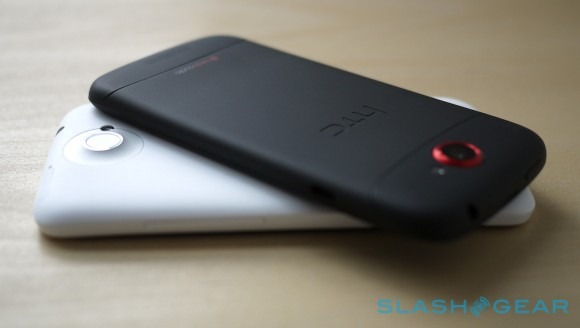HTC One Solves The Desirability Dilemma
HTC has been holding its collective, corporate breath, desperate for its luck to change. February's HTC One Series faced a formidable challenge: a reasonably strong start to 2011 had dwindled until, by Q4, the company was a shadow of its former, innovative self. Now, with the first One X and One S reviews proving positively glowing, it seems HTC could finally be turning a corner. Having spent time with both models, though, what really impressed me was the feel that HTC had finally banished the accountants from the drawing board.
What's interesting about the One Series is just how close the capabilities of the flagship One X are to the supposedly mid-range One S. Yes, the One S drops a few specs points in comparison to the One X. There's no NFC for a start, the display is lower resolution – perhaps because HTC couldn't get sufficient 4.3-inch AMOLEDs running at 720p for its needs, or maybe they were just too expensive – and there's half the internal storage and one less WCDMA/HSPA band. Nonetheless, they're relatively minor points.
Think of the difference between 2011's Desire S and Sensation, for instance. Processing power, display quality, camera abilities and more were all strictly curtailed on the Desire S, firmly lodging the Sensation at the top end of HTC's range. Yet serious buyers could easily find themselves satisfied by the One S rather than spending the roughly €100 more for the One X: even its Snapdragon dual-core chipset delivers similar benchmarking results to the quad-core Tegra 3.
[aquote]It's the absence of compromise that leaves me most hopeful[/aquote]
It's that absence of compromise that leaves me most hopeful about HTC's fortunes in 2012. Last year's range was Android-by-numbers; strictly delineated products intended to hit price points and "target demographics", so you got middling mid-tier phones when rivals were pushing the envelope, and bizarre outliers like the Sensation XL with a huge screen but pathetic resolution.

I don't know what's actually going on inside HTC, but it certainly seems like the company's engineers and designers have once again taken the reins rather than the accountants and marketers. No more artificial limits for the sake of product positioning, just handsets that are each compelling in their own way. You could buy the One S and not forever feel like you opted for the poorer phone.
The responses of my colleagues playing with both models have been telling. Where normally there's no shortage of spec-chasing, people refusing to settle for anything but the most powerful, the best screen, the greatest amount of hyperbole, many have been swayed by the One S' slimline design and balance of capabilities and compactness. That quality should pay dividends when it comes to consumer first-impressions in stores.
HTC still has some way to go before it comes close to reclaiming its former glory. What's different now is that we know the company is up to the challenge. The One Series faces difficult months ahead, with Samsung's Galaxy S III and Apple's iPhone 5 expected to ratchet up the competition, but HTC has put its stake in the ground with two not only strong devices, but ones that recognize their market.
